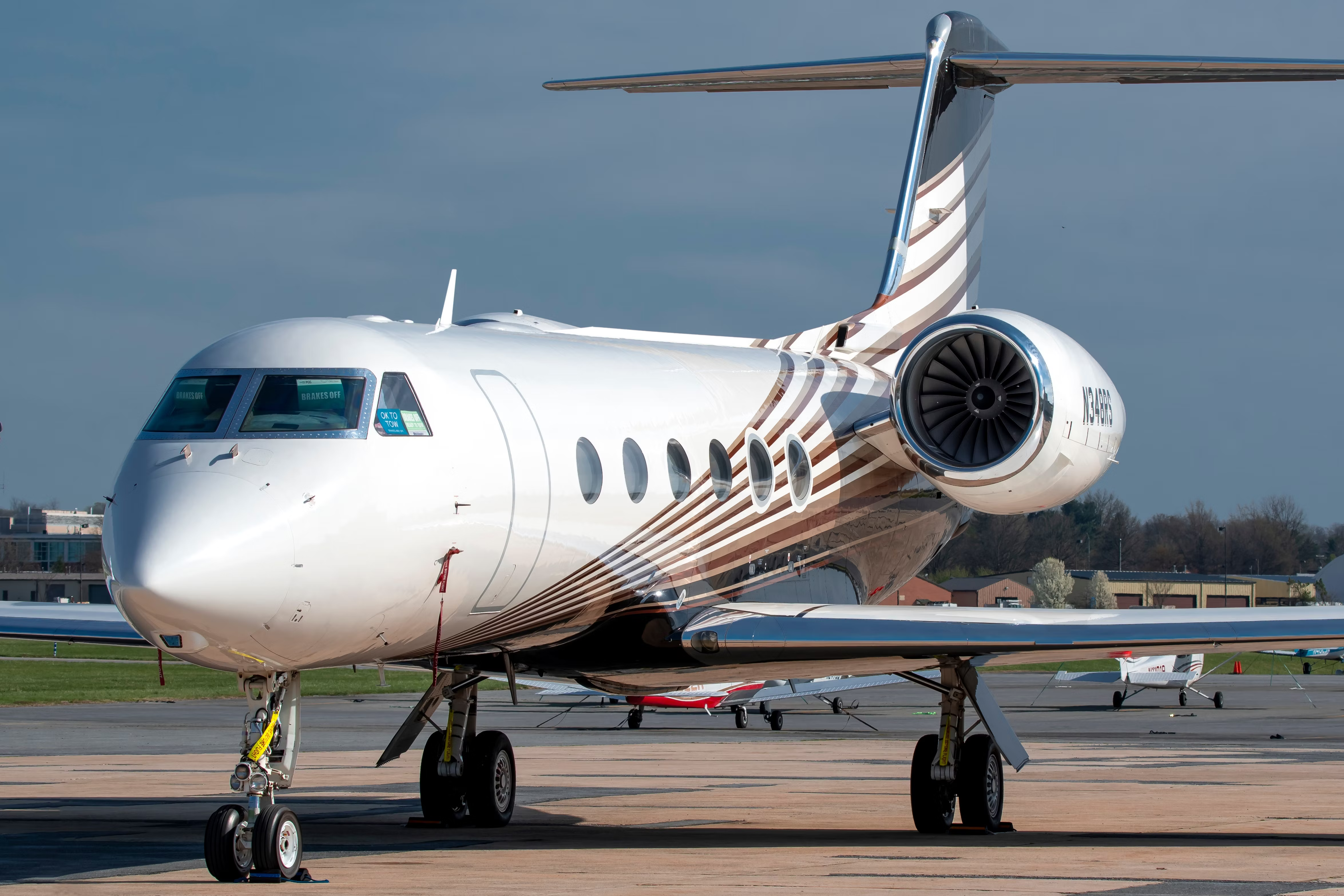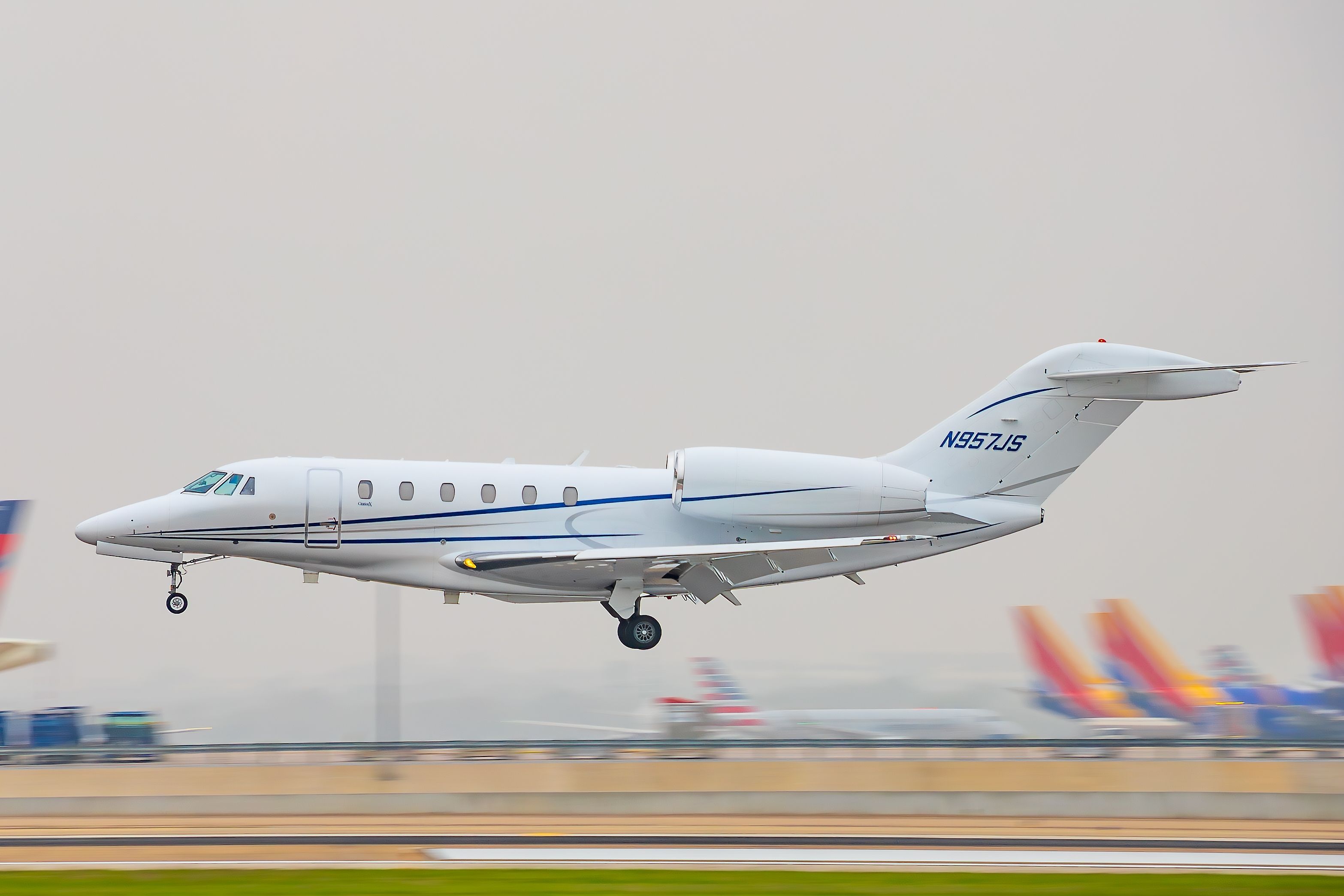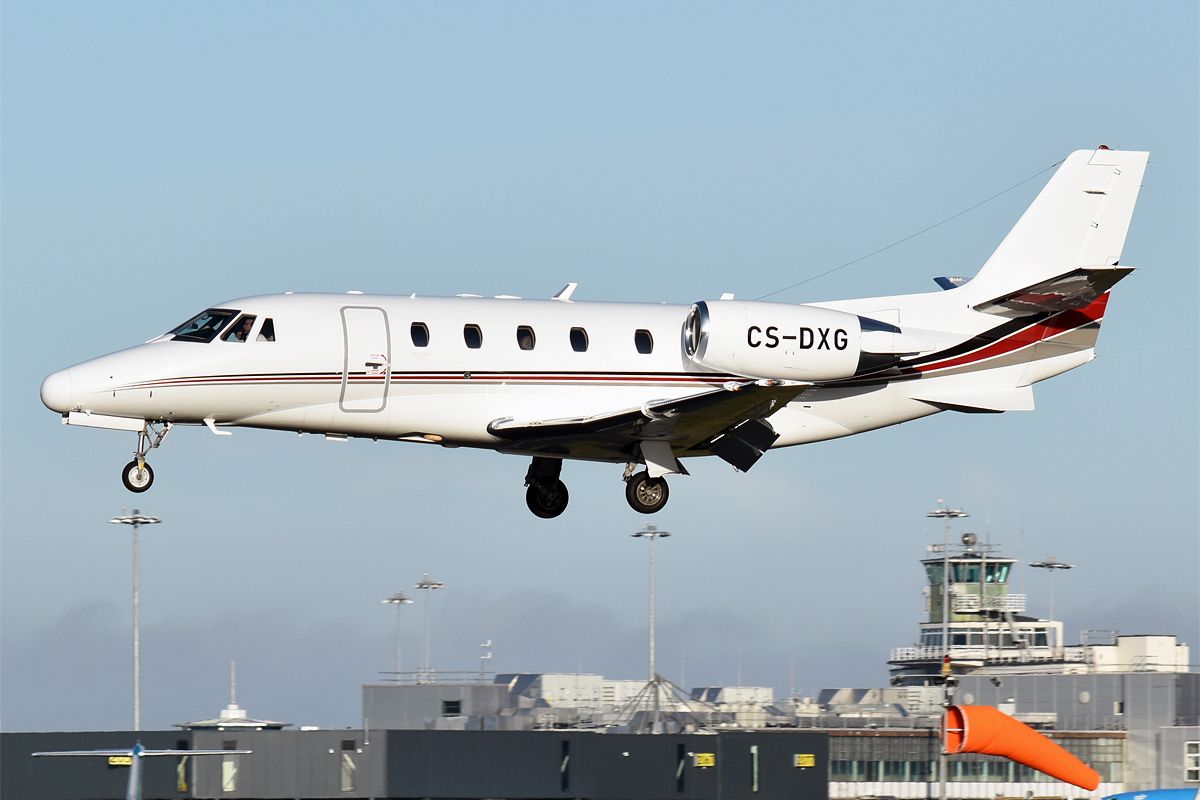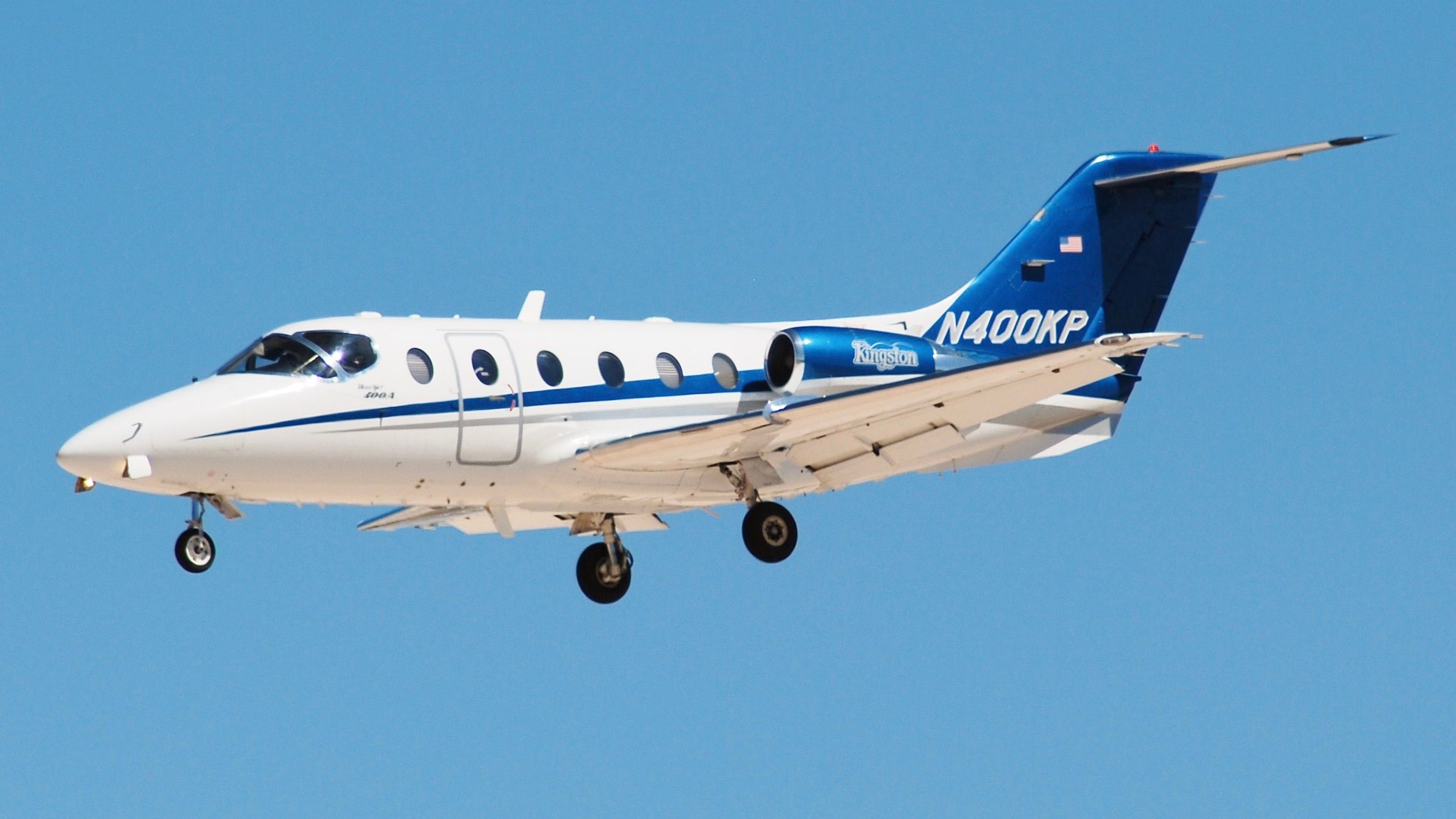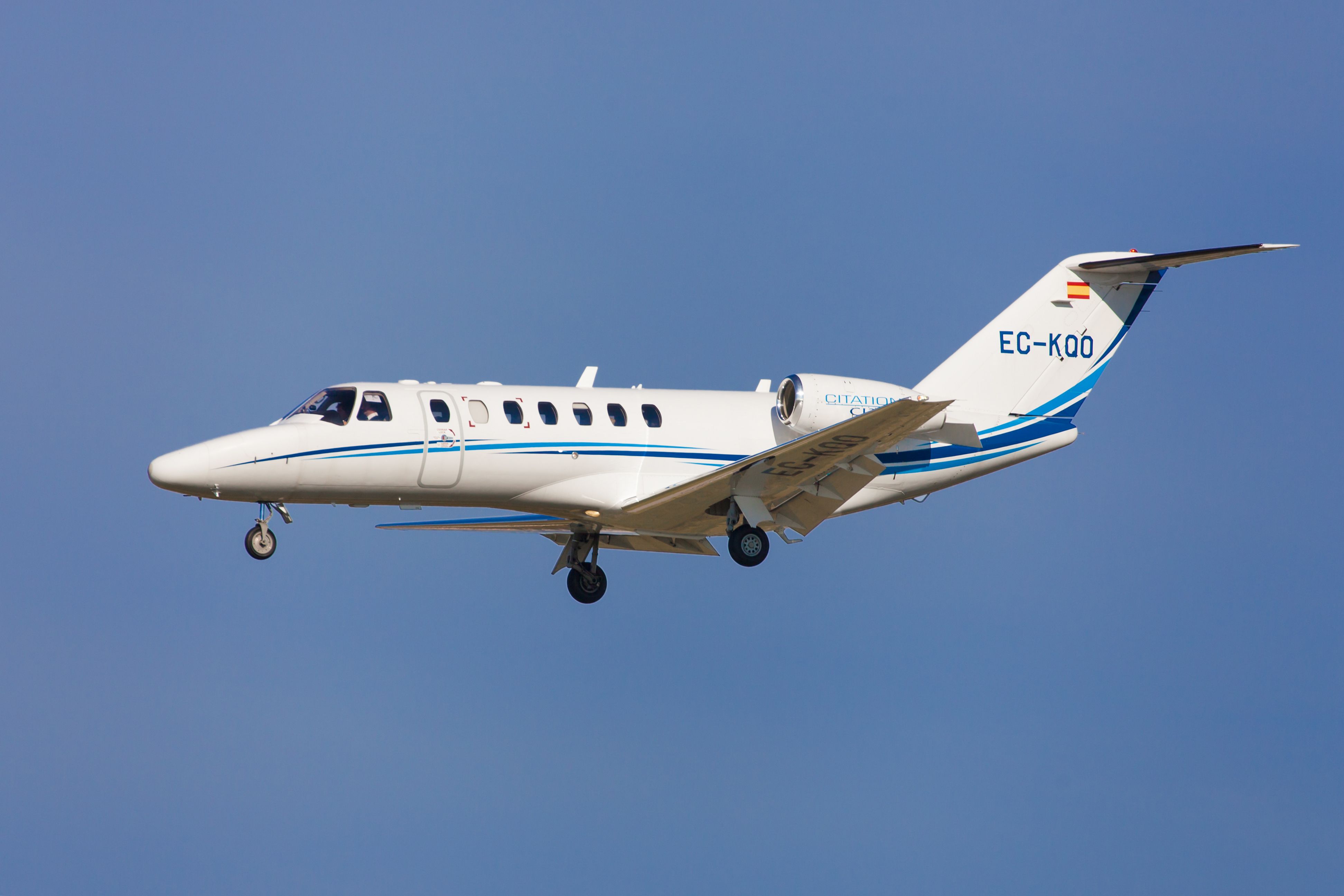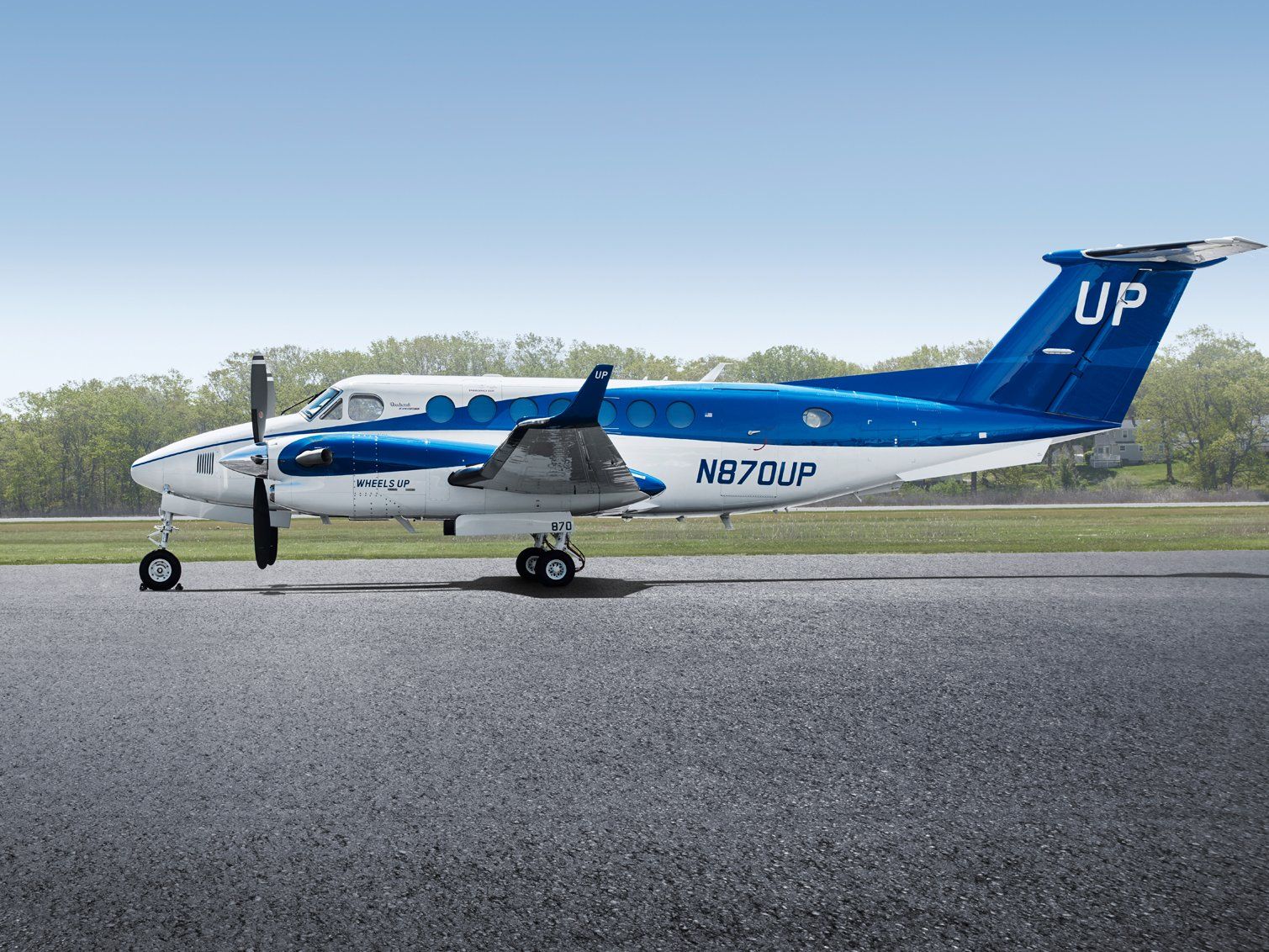Summary
- Wheels Up is a private aviation company that operates a diverse fleet of aircraft.
- Notable aircraft in its fleet include the Cessna Citation X and the Cessna Citation XLS.
- Wheels Up also operates the Beechcraft Hawker 400XP.
Wheels Up is one of the most recognizable providers of private jets. The company was founded in August 2013, eleven years ago, by Kenny Dichter and Bill Allard. Since then, it has grown to be one of the largest private jet charter companies in the United States. Wheels Up entered the charter business shortly after its founding when it announced a $1.4 billion purchase of over 100 Beechcraft King Air 350s.
The company found immediate success, and it had over 1,000 members by 2014. It has also expanded its fleet to include other used Cessna Citation jets. The charter company continued to grow and sold over 5,000 memberships in five years. In 2017, it flew nearly 60,000 hours as a company. Finally, in 2021, Wheels Up became the first private aviation company to be publicly traded. It was listed on the New York Stock Exchange (NYSE) with the symbol $UP.

Related
Wheels Up Lays Off Approximately 11% Of Its Flight Crew Staff
The company still recorded an operating loss in the first quarter this year.
However, during its lifetime, the company never reached a profitable state. Wheels Up was losing millions, even two years after it went public, which caused the NYSE to delist the company from the exchange. Last year, Delta Air Lines assisted with continued struggles. The Atlanta, Georgia-based airline purchased a 95% ownership stake in the company for $500 million to keep the company afloat. Delta planned to make Wheels Up profitable within the next several years. So far, in the first quarter of 2024, Wheels Up recorded a net loss of $97 million.
However, this is still an improvement from previous years, as the Delta-implemented management team continues to make changes, such as selling off the company’s aircraft management and aircraft sales businesses. Although Wheels Up no longer has an aircraft management business segment, the company still operates a large fleet of aircraft to continue its charter side of the business.
Overall, Wheels Up tends to focus on smaller markets where commercial airlines typically do not fly. Because of this, the company has purchased many smaller aircraft to operate more locally. However, Wheels Up has also purchased several larger aircraft for access to more popular markets. Let’s take a closer look at the unique aircraft that Wheels Up owns and offers for charter to its members.
1
Gulfstream G450
Aircraft owned: One
|
Capacity |
16 passengers |
|---|---|
|
Length |
89 feet four inches |
|
Height |
25 feet two inches |
|
Wingspan |
77 feet ten inches |
|
Maximum takeoff weight (MTOW) |
74,600 pounds |
|
Cruise speed |
Mach 0.85 (652 miles per hour) |
|
Range |
4,350 nautical miles (5,005 miles) |
|
Service ceiling |
45,000 feet |
The largest aircraft Wheels Up operates is a single Gulfstream G450. The G450 is a derivative of the famous Gulfstream IV family. The GIV was first introduced in 1985, and it incorporated a stretched fuselage of the Gulfstream III. Gulfstream implemented several upgrades, such as new engines and other interior upgrades. Eventually, in 2004, the Gulfstream G450 was introduced as a replacement for the GIV. This aircraft had improved performance and a new avionics system that included a heads-up display (HUD).
Photo: Andrew Mauro | Shutterstock
The Gulfstream G450 utilizes an upgraded wing with weight reduction and a new contour to reduce drag and improve the aircraft’s range by over 300 nautical miles (345 miles). The aircraft utilizes two Rolls-Royce Tay engines, which provide over 11,000 pounds of thrust. It was also the first business jet to utilize a glass cockpit, which featured the Honeywell SPZ 8000 avionics system.
2
Cessna Citation X
Aircraft owned: 43 aircraft
|
Capacity |
12 passengers |
|---|---|
|
Length |
72.53 feet |
|
Height |
19.2 feet |
|
Wingspan |
63.6 feet |
|
Maximum takeoff weight (MTOW) |
36,100 pounds |
|
Cruise speed |
528 knots (608 miles per hour) |
|
Range |
3,460 nautical miles (3,982 miles) |
|
Service ceiling |
51,000 feet |
Wheels Up also operates several Citation X, which at one point were among the fastest business jets in the world. Cessna introduced the Citation X in July 1996. This aircraft took the private aviation industry by storm due to its high cruise speed and competitive range. This aircraft changed the image of the Citation family, which had previously been known to be slower and easier to handle business jets. Instead, the Citation X led the way as an extremely high-luxury aircraft with highly competitive performance measures. Over 300 Citation Xs were delivered until the aircraft ceased production in 2018.
Photo: lorenzatx | Shutterstock
The Citation X has the same fuselage cross-section as previous Citations, but Cessna implemented the wing-attach mechanism under the fuselage, which increased the cabin size and simplified the fuselage-to-wing connection. The aircraft utilizes two Rolls-Royce AE 3007C turbofan engines, each providing around 6,500 pounds of thrust. A new highly swept wing was implemented, which had the steepest angle of sweep of any civilian aircraft. The Citation X also featured a glass cockpit that utilized the Honeywell Primus 2000 EFIS avionics suite.
3
Cessna Citation XLS
Aircraft owned: 19 aircraft
|
Capacity |
9 passengers |
|---|---|
|
Length |
52 feet six inches |
|
Height |
17 feet two inches |
|
Wingspan |
56 feet four inches |
|
Maximum takeoff weight (MTOW) |
20,200 pounds |
|
Cruise speed |
441 knots (507 miles per hour) |
|
Range |
1,858 nautical miles (2,140 miles) |
|
Service ceiling |
45,000 feet |
The Cessna Citation XLS is part of the famous Citation Excel family of business jets, which has been one of the most-flown aircraft families over the last ten years. The popular Citation Excel was first introduced in 1998, but several upgraded variants have since been introduced. The model that Wheels Up uses, the Citation XLS, was first introduced beginning in 2004. Since then, Cessna has released the Citation XLS+ and will release the Citation Ascend in 2025 with further upgrades.
Cessna utilized the famous Citation X’s fuselage cross-section but shortened it by just over two feet. The Wichita, Kansas-based company implemented a new straight wing that used a supercritical portfolio and borrowed the tail from the Citation V. The Citation XLS upgrade uses two Pratt & Whitney Canada PW545B turbofan engines, which provide over 4,000 pounds of thrust each. The Citation XLS also implemented an updated glass cockpit, which featured the Honeywell Primus 1000EFIS avionics suite.
4
Beechcraft Hawker 400XP
Aircraft owned: 35 aircraft
|
Capacity |
9 passengers |
|---|---|
|
Length |
48 feet five inches |
|
Height |
13 feet eleven inches |
|
Wingspan |
43 feet ten inches |
|
Maximum takeoff weight (MTOW) |
16,300 pounds |
|
Cruise speed |
447 knots (514 miles per hour) |
|
Range |
2,160 nautical miles (2,490 miles) |
|
Service ceiling |
45,000 feet |
The Beech Hawker 400 was originally designed and developed by Mitsubishi’s aviation department when it was designated as the Mitsubishi Diamond. In 1985, Mitsubishi sold the rights to Beechcraft, which then began manufacturing the aircraft as the Beech 400. This aircraft picked up steam with sales in the United States. It was even developed into a popular choice for the United States Air Force, where it was sold as the T-1 Jayhawk and used as a jet trainer.
After Hawker was acquired in 1993, Beechcraft’s parent company began manufacturing the business jet, the Hawker 400, to sell it under the Hawker name. In 2003, the Hawker 400XP was introduced, which introduced several upgrades, including an increase in its maximum takeoff weight and other avionics upgrades.
The aircraft’s airframe is almost entirely made of aluminum and other metal alloys. The wing was designed with a supercritical airfoil, which incorporates a unique shape to minimize drag and improve overall dynamics. The light business jet originally utilized two Pratt & Whitney Canada JT15D turbofan engines, but later models utilized Williams FJ44 turbofan engines, which provided over 3,000 pounds of thrust each.
5
Cessna Citation CJ3
Aircraft owned: 19 aircraft
|
Capacity |
9 passengers |
|---|---|
|
Length |
51 feet two inches |
|
Height |
15 feet two inches |
|
Wingspan |
53 feet four inches |
|
Maximum takeoff weight (MTOW) |
13,870 pounds |
|
Cruise speed |
416 knots (479 miles per hour) |
|
Range |
2,040 nautical miles (2,348 miles) |
|
Service ceiling |
45,000 feet |
The Cessna Citation CJ3 is a light business jet that is a part of the CitationJet series of aircraft. The initial development of this family of aircraft was designated as the Cessna CitationJet, later upgraded to the Citation M2, and was launched in October 1989. Since the original aircraft was introduced, Cessna has released several longer aircraft, which are called the CJ2, the CJ3, and the CJ4. Currently, Cessna produces the Citation M2, the Citation CJ3, and the Citation CJ4.
Photo: Santi Rodriguez | Shutterstock
The Cessna CJ3 was first certified by the Federal Aviation Administration (FAA) in October 2004 and deliveries began that same December. It has the same fuselage cross-section as Citations I and II, and it has an overall similar airframe. Cessna updated the wing-attach fairing and incorporated several composite assemblies to reduce weight. A new supercritical wing was added to improve its aerodynamics.
The CJ3 also utilizes two rear-mounted FJ44-3A turbofan engines, which each provide nearly 3,000 pounds of thrust. Newly upgraded engines and a combination of other drag-reducing techniques help the aircraft reach a range of over 2,000 nautical miles (2,300 miles) and a cruise speed of over 400 knots (460 miles per hour).
6
Beechcraft King Air 350
Aircraft owned: 59 aircraft
|
Capacity |
11 passengers |
|---|---|
|
Length |
46 feet eight inches |
|
Height |
14 feet four inches |
|
Wingspan |
57 feet eleven inches |
|
Maximum takeoff weight (MTOW) |
15,000 pounds |
|
Cruise speed |
312 knots (360 miles per hour) |
|
Range |
1,806 nautical miles (2,078 miles) |
|
Service ceiling |
35,000 feet |
Beechcraft developed the King Air 300 series from the original King Air series. Until 1996, the King Air 300 family of aircraft was originally designated as the Super King Air. The first Super King Air that Beechcraft developed was the King Air 200. It was originally launched in the 1970s and saw immediate success. The larger variant in the King Air series saw so much success that Beechcraft decided to make a longer variant as well. This aircraft later became the King Air 300, and it was first introduced in 1984.
Photo: Wheels Up
Beechcraft released an upgraded variant, designated the King Air 350, in 1990. This aircraft has become one of the most successful variants due to its large size. Beechcraft stretched the fuselage three feet, so the aircraft has a cabin that is 17 feet long. This allows for two extra cabin windows and can also be configured for double club seating. Other interior upgrades include an UltraQuiet active noise-canceling system. The Wichita, Kansas-based company also stretched the wings and added winglets.
The King Air 350i is the most recent variant, released in December 2009. Beechcraft lowered the noise level to compete with small cabin jets and also added darker windows, a high-definition video monitor, and armrest controllers that operate the cabin lighting. The King Air 350i is extremely efficient, which leads to lower operating costs compared to earlier models.


